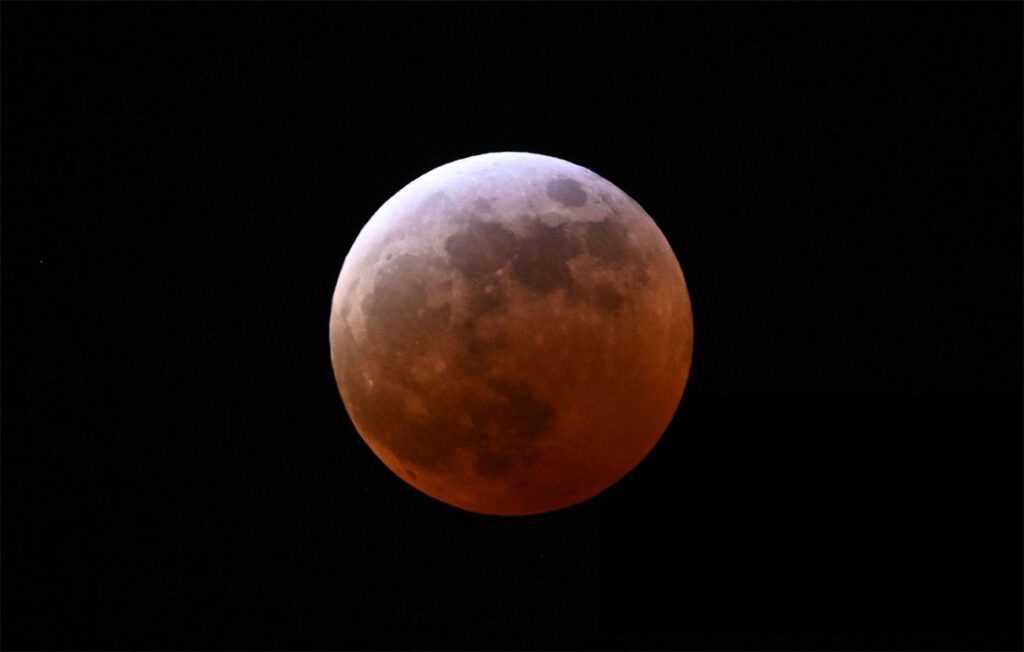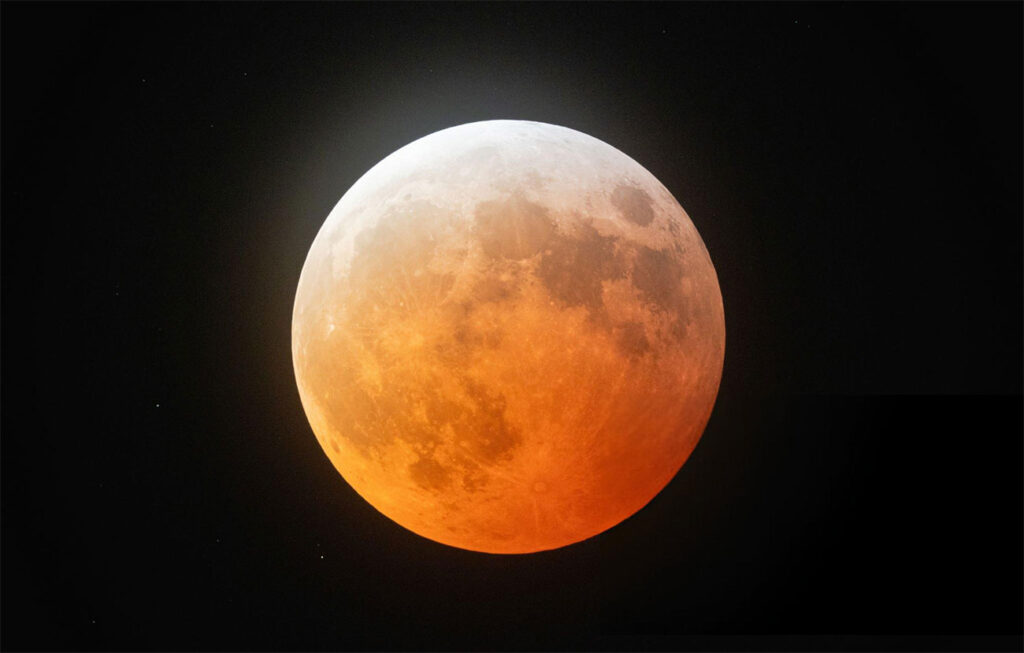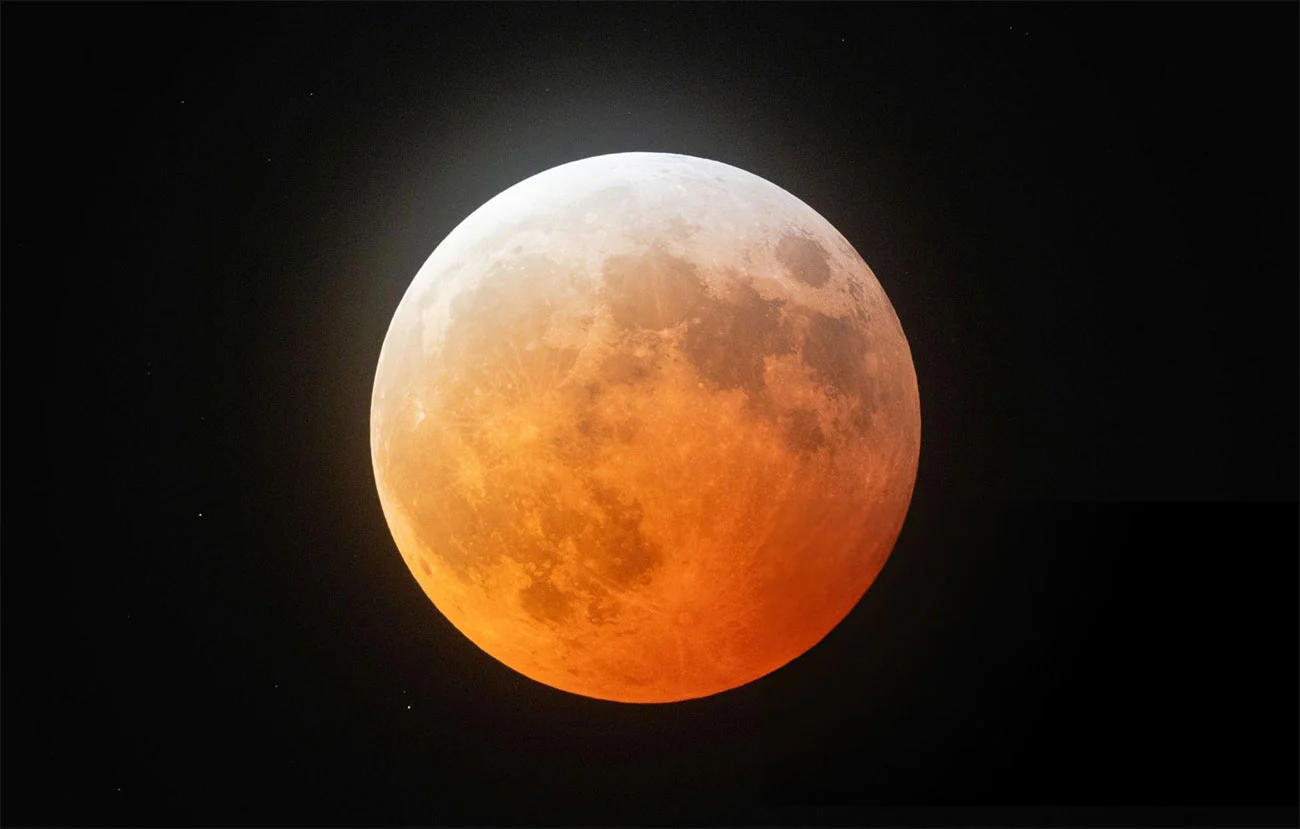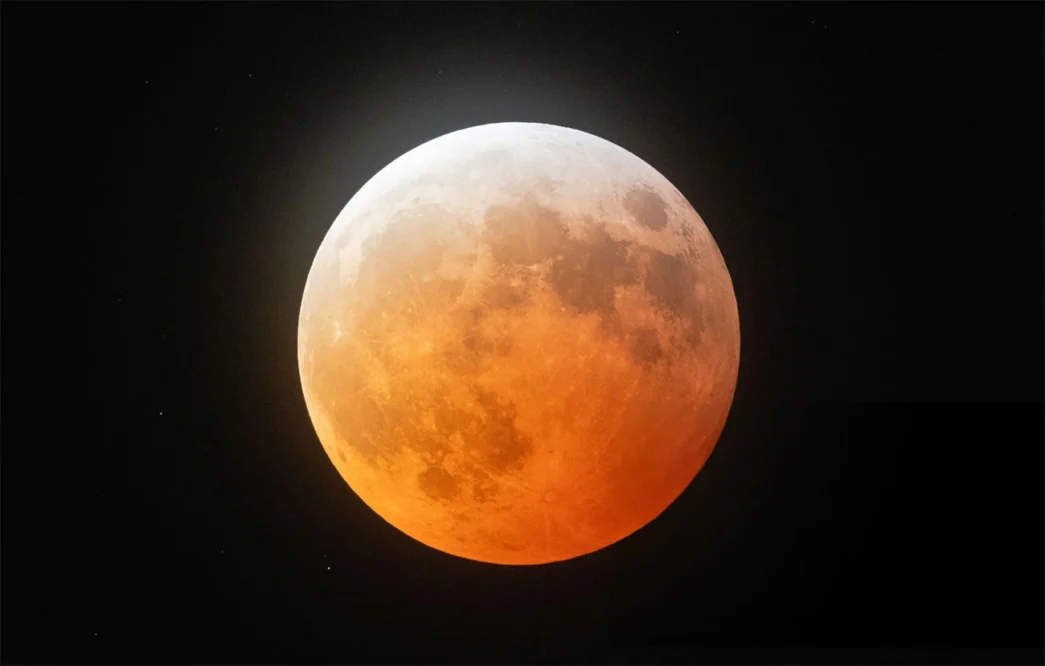The night sky is a canvas of wonders, but few celestial events rival the drama of a blood moon. In March 2024, skywatchers across the United States were treated to a stunning total lunar eclipse, where the moon turned a deep crimson-red, casting a mesmerizing glow over the horizon. This rare phenomenon, often called a “blood moon,” combines science and spectacle, offering a chance to witness one of nature’s most breathtaking displays. Let’s explore what makes this event so special, how it happens, and how to capture its beauty.
What is a Blood Moon?

A full lunar eclipse is seen during the Blood Moon Lunar Eclipse in Palm Springs, California, on March 13, 2025. (Photo by Patrick T. Fallon) Getty Images
A blood moon occurs during a total lunar eclipse when the Earth, sun, and moon align perfectly. As the moon passes into Earth’s shadow, sunlight filters through the planet’s atmosphere. The atmosphere scatters shorter wavelengths of light (like blue), leaving longer red wavelengths to illuminate the moon. This creates the iconic red or coppery hue that gives the event its name.
Why March 2024 Was Special

The ‘Blood Worm Moon’ total lunar eclipse is seen above Austin, TX on March 14, 2025. (Photo by Rick Kern/Getty Images)
The March 2024 lunar eclipse was notable for its visibility across North America, with clear skies in regions like the Midwest and West Coast providing ideal viewing conditions. The “red glow” effect was particularly vivid, making it a prime opportunity for photographers and astronomy enthusiasts.
The Science Behind the Red Glow
- Scattering Effect: Blue light (shorter wavelengths) scatters more easily, while red light (longer wavelengths) penetrates deeper.
- Earth’s Shadow: The moon enters the umbra (dark inner part of Earth’s shadow), where only the filtered red light reaches it.
- Weather and Pollution: Atmospheric conditions on Earth can intensify or mute the red hue. For example, volcanic ash or pollution might deepen the color.















